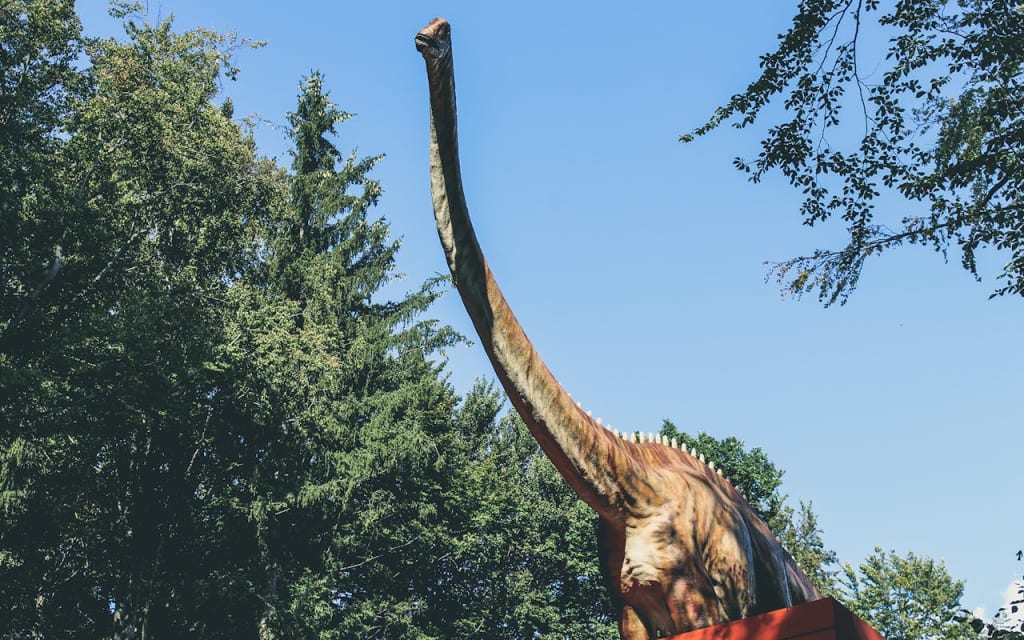
The Jurassic Period, spanning from approximately 201.3 million years ago to 145 million years ago, was a pivotal era in Earth's history. It was the second period of the Mesozoic Era, following the Triassic Period and preceding the Cretaceous Period. Named after the Jura Mountains between France and Switzerland where many Jurassic rocks are exposed, this period is renowned for its flourishing and diverse life forms, including the dominance of dinosaurs, the rise of mammals, and the evolution of numerous other organisms. Let's delve into the fascinating world of the Jurassic Period.
Geology and Climate
The Jurassic Period witnessed significant geological events that shaped the planet's landscape. The breakup of the supercontinent Pangaea continued during this time, leading to the formation of new continents and ocean basins. Laurasia, the northern portion of Pangaea, began to separate from Gondwana, the southern landmass. This breakup facilitated the opening of the Central Atlantic Ocean.
The climate of the Jurassic varied considerably from region to region due to shifting continental positions and other factors. Generally, it is believed that the Jurassic climate was warmer and more humid than that of the present day, with global average temperatures higher than during the preceding Triassic Period. This warmth likely contributed to the proliferation of diverse flora and fauna across the planet.
Flora
The Jurassic Period was marked by the dominance of gymnosperms, a group of seed-producing plants that include conifers, cycads, and ginkgos. These plants had been diversifying since the late Paleozoic Era but reached their peak during the Jurassic. Conifers, with their needle-like leaves and cones, were particularly widespread and diverse during this time, forming extensive forests across much of the landmasses.
Cycads, characterized by their large, compound leaves and stout trunks, were also abundant during the Jurassic. These plants were especially common in tropical and subtropical regions, where they formed dense stands and provided habitats for a variety of animals.
Ginkgo trees, known for their distinctive fan-shaped leaves, were another prominent component of Jurassic flora. While they are relatively rare today, ginkgos were widespread during the Mesozoic Era, including the Jurassic Period.
Fauna
The Jurassic Period is often referred to as the "Age of Dinosaurs," and for good reason. Dinosaurs were the dominant land animals during this time, occupying a wide range of ecological niches and displaying remarkable diversity in size, shape, and behavior.
Among the most iconic dinosaurs of the Jurassic were the sauropods, massive, long-necked herbivores that included giants like Diplodocus, Brachiosaurus, and Apatosaurus (formerly known as Brontosaurus). These colossal creatures were among the largest animals ever to walk the Earth, reaching lengths of up to 100 feet or more.
Another group of dinosaurs that thrived during the Jurassic were the theropods, a diverse group of carnivores that included famous predators like Allosaurus and Ceratosaurus. These fearsome hunters were well adapted for capturing and subduing prey, with sharp teeth, powerful jaws, and keen senses.
In addition to sauropods and theropods, the Jurassic also saw the rise of other dinosaur groups, including ornithischians (such as Stegosaurus and Triceratops) and early birds like Archaeopteryx, which possessed feathers and other features linking them to modern birds.
Beyond dinosaurs, the Jurassic Period was home to a variety of other fascinating creatures. Marine reptiles like ichthyosaurs, plesiosaurs, and marine crocodiles ruled the seas, while flying reptiles known as pterosaurs soared through the skies. These animals occupied ecological roles similar to those of modern marine mammals and seabirds, demonstrating the incredible diversity of Mesozoic ecosystems.
Evolution of Mammals
While dinosaurs dominated the terrestrial realm during the Jurassic, small, shrew-like mammals were evolving alongside them. Mammals first appeared in the late Triassic Period, but it was during the Jurassic that they began to diversify and occupy a wider range of habitats.
Early Jurassic mammals were mostly small and nocturnal, likely occupying niches that were less competitive with the dominant dinosaurs. However, as the Jurassic progressed, mammals underwent significant evolutionary changes, including adaptations for burrowing, climbing, and other specialized behaviors.
One of the most important developments in mammalian evolution during the Jurassic was the emergence of true placental mammals, a group that includes the vast majority of modern mammal species. While early placental mammals remained small and relatively inconspicuous during the Jurassic, they would go on to diversify and thrive in the wake of the extinction of the non-avian dinosaurs at the end of the Cretaceous Period.
Extinction Events
The Jurassic Period was not without its challenges, and several extinction events occurred during this time, albeit on a smaller scale than the cataclysmic events that would later define the end of the Mesozoic Era. One notable extinction event, known as the Toarcian turnover, occurred around 183 million years ago during the Early Jurassic. This event, possibly triggered by volcanic activity or other environmental disturbances, led to the decline of various marine organisms, including ammonites and bivalves.
Despite these challenges, life rebounded and continued to thrive throughout the Jurassic Period, paving the way for the evolutionary innovations that would characterize the subsequent Cretaceous Period and beyond.
Legacy
The legacy of the Jurassic Period is profound and far-reaching. It was during this time that many of the major groups of animals and plants that still dominate the Earth today first appeared and diversified. The rise of dinosaurs and their subsequent extinction at the end of the Cretaceous Period fundamentally altered the course of evolution, allowing mammals and other groups to rise to prominence in the aftermath.
Furthermore, the geological processes that shaped the landscapes of the Jurassic continue to influence the Earth's surface today. The breakup of Pangaea and the formation of new continents and ocean basins set the stage for the modern configuration of Earth's landmasses and oceans.
In popular culture, the Jurassic Period has captured the imagination of people around the world, thanks in part to the enduring popularity of dinosaurs. Films, books, and other media often depict this ancient world teeming with fantastic creatures, showcasing both the awe-inspiring majesty and the brutal realities of life during the Age of Dinosaurs.
In conclusion, the Jurassic Period was a time of remarkable transformation and diversification in Earth's history. From the towering sauropods that roamed the land to the graceful ichthyosaurs that ruled the seas, the Jurassic world was a testament to the power of evolution and the resilience of life in the face of environmental change. By studying the fossils and geological records left behind from this period, scientists continue to uncover new insights into the ancient past and the processes that have shaped life on Earth for millions of years.
About the Creator
Enjoyed the story? Support the Creator.
Subscribe for free to receive all their stories in your feed. You could also pledge your support or give them a one-off tip, letting them know you appreciate their work.






Comments
There are no comments for this story
Be the first to respond and start the conversation.